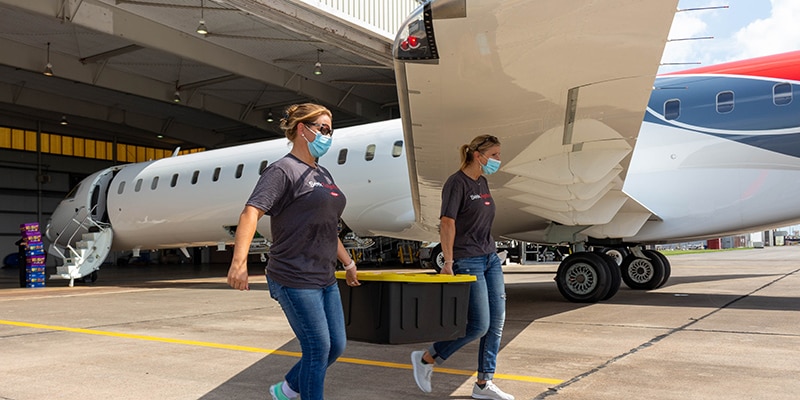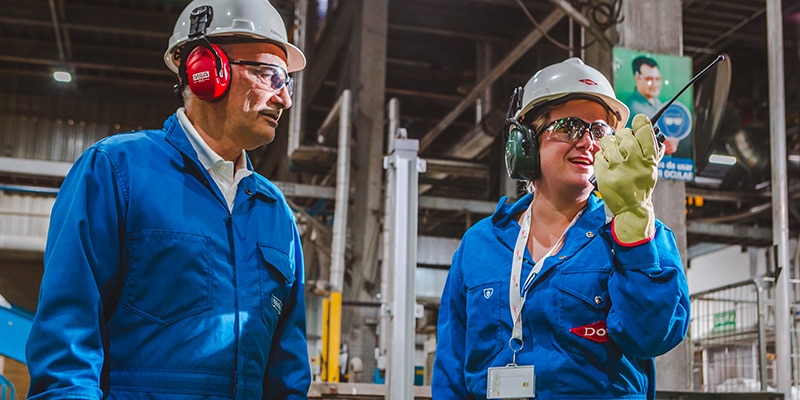
Aligning to the United Nations Sustainable Development Goals
This year marks the start of the Decade of Action to deliver the United Nations’ Sustainable Development Goals (SDGs) by 2030. It is a critical period to accelerate responses to the world’s greatest challenges – from ensuring food security to reversing climate change.
Despite the impacts of COVID-19, Dow is joining other companies that have aligned their sustainability commitments to the SDGs and are accelerating their actions to commit to climate action. Introduced in 2015, the 17 UN SDGs serve as a universal framework to foster collaboration to solve the world’s most challenging tasks in sustainability.
“We developed our 2025 Sustainability Goals in a parallel path with the development of the SDGs,” said Mary Draves, chief sustainability officer and vice president, Environment, Health & Safety. “Because 95% of the world’s manufactured goods are touched by chemistry, our industry is a critical enabler of technologies that can help make the SDGs a reality. Connecting our strategies with the global priorities of the SDGs have helped guide us to even greater innovation, efficiency, and scale of impact through collaboration.”
At several levels, our 2025 Sustainability Goals and new sustainability targets impact each of the 17 SDGs, but there are a few goals, in particular, where we have the ability to make a larger impact. Below is a look at some key areas where Dow is taking actions to help advance the SDGs:

Safe Materials for a Sustainable Planet

Delivering Breakthrough Innovations
We’re listening to our customers and the value chain to drive sustainable chemistry innovation and transform our portfolio to have more products with positive impact. We also are focused on increasing the positive net impact of our products, based upon knowledge of where our feedstocks and energy are from, our processes, how our products are used by customers, and how they are treated at end-of-life.
Examples
- The ratio of positive impact of products across all markets continue exceed burdens by three times. We also continue to improve our sustainable chemistry performance and report progress annually.
- Technologies such as Dow PRIMAL™ Bio-based Acrylic Emulsions are using renewable ingredients to replace petroleum-sourced material with plant-based carbon. In paints they deliver excellent properties, have ultra-low odor, low VOC, low emissions and help improve indoor air quality by capturing formaldehyde, a known air pollutant.

World-Leading Operations Performance
We’re contributing to advancing materials for renewable energy, including photovoltaics, while increasing the proportion of renewable energy used in our production.
Examples
- Dow is the leading customer of clean energy in our sector and amongst the leading 25 worldwide companies for renewable power use. Across the world, we have contracts for power procured by wind, solar, hydropower, biomass and landfill gas.
- The global photovoltaic (PV) industry continues to grow. And the industry needs modules with longer service life and better reliability. ENGAGE™ PV Polyolefin Elastomers (POE) contribute to clean energy by providing opportunities for exceptional long-term performance and reliability.

Delivering Breakthrough Innovations
Leading the Blueprint
We contribute to the built environment and design advance materials and coatings that make structures more resilient, energy efficient and use less resources to build.
Examples
- We are developing an array of chemistries, formulations and materials that enhance performance, durability and sustainability across the entire built environment. Technologies include silicone structural glazing that enable durable and high-performing designs and polyurethane systems that deliver high-performance insulation solutions.
- Through our carbon partnership with the International Olympic Committee, we are collaborating across the value chain to accelerate the adoption of resource-efficient building options that contribute toward a lower carbon future.

Advancing a Circular Economy

Stop the Waste and Close the Loop sustainability targets
Throughout our operations, we are engaged in the transition from a linear economy to one that redesigns, recycles, reuses and remanufactures to keep materials at their highest value use for as long as possible.
Examples
- We are engaged in numerous initiatives to “close the loop” and ensure that no plastic ends up in the environment or is lost to landfill. One such project is our partnership with Fuenix for the supply of a new feedstock made from recycled plastic waste, to produce new Dow polymers.
- We are working with industry peers, associations, governments, non-governmental organizations, brands, retailers and consumers to stop the waste and help stem the tide of plastic waste before it reaches our oceans. This includes are investments in Circulate Capital’s Ocean Fund – the first fund and incubator preventing ocean plastic – and the Alliance to End Plastic Waste, which has committed more than $1.5 billion to developing and scaling solutions for a world free of plastic waste.

World-Leading Operations Performance

Protect the Climate sustainability target
Material science will play a critical role in contributing to a lower-carbon future. We are actively addressing the issue of climate change through a variety of initiatives, including energy efficiency, reducing the footprint of our operations and products, and developing innovative solutions to avoid downstream emissions.
Examples
- We are maintaining our absolute GHG emissions at or below our 2006 baseline, though we have grown exponentially.
- We are actively investing in technologies to manufacture our products using less resources. For example, we recently announced the retrofitting of a mixed-feed cracker in Louisiana with proprietary technology to produce propylene. This will reduce energy use and GHG emissions by up to 20 percent versus conventional technology.





